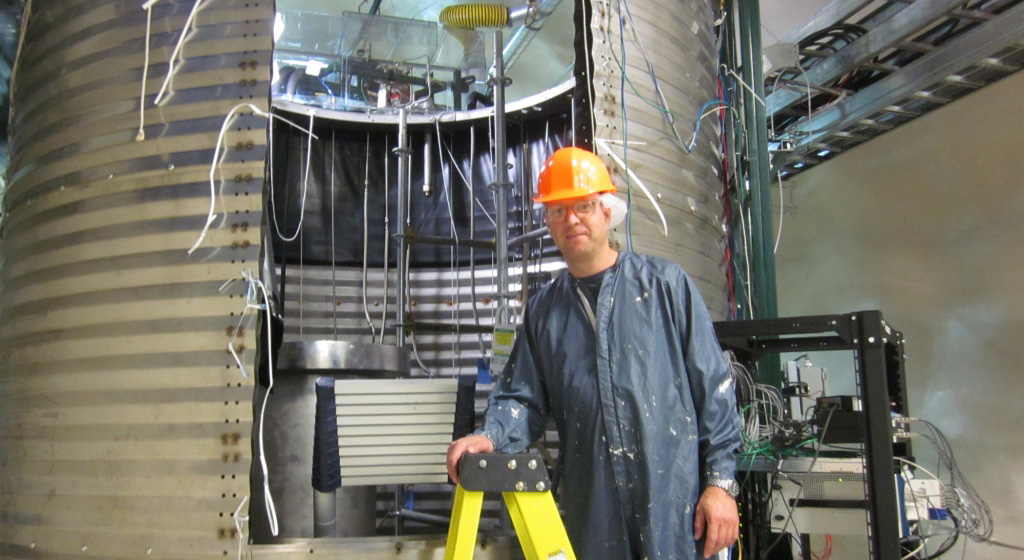
Professor Carsten Krauss in front of the PICO 60 experiment during construction.
The PICO Collaboration is excited to announce that the PICO-60 dark matter bubble chamber experiment has produced a new dark matter limit after analysis of data from the most recent run.
Carsten Krauss, Associate Professor in the Department of Physics, is the lead scientist for the PICO-60 experiment. Along with his group, Krauss led the detector upgrades including a new optical camera system and implementing detector cleanliness to ensure the experiment went off without a hitch.
"The new fill and operation of the PICO 60 detector could really not have gone any better," says Krauss. "The excellent result shows not only that bubble chambers have an excellent role to play in the quest for the discovery of dark matter, but it also shows that the PICO collaboration has developed the deep knowledge of the technology needed to push dark matter searches with the planned next generation bubble chambers."
PICO is the leading experiment in the direct detection of dark matter.The University of Alberta is one of 17 institutions from around the world participating in the PICO Collaboration. The PICO-60 experiment is currently the world's largest bubble chamber in operation.
The detector uses the target fluid in a superheated state such that a dark matter particle interaction with a fluorine nucleus causes the fluid to boil and creates a telltale bubble in the chamber. Digital cameras capture the bubbles and acoustic pickups to improve the ability to distinguish between dark matter particles and other sources when analyzing data.
The PICO bubble chambers are made insensitive to electromagnetic interactions by tuning the operating temperatures of the experiment, while the alpha decays are discriminated from dark matter interactions by their sound signal, making these detectors very powerful tools in the search for dark matter.
Read more about PICO-60 on arXiv.